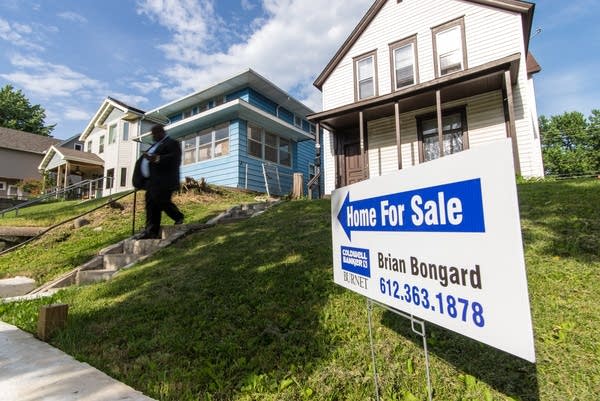Harvard study: Twin Cities housing spendy and scarce, better than some metros

Go Deeper.
Create an account or log in to save stories.
Like this?
Thanks for liking this story! We have added it to a list of your favorite stories.
A new Harvard University study indicates housing prices continue to rise and availability continues to shrink in the Twin Cities, but other areas are worse off.
The study finds that housing costs are an increasing burden for many lower-income households, as the supply of inexpensive apartments falls. The number of apartments renting for $800 or less plunged by more than a third in the Twin Cities between 2011 and 2017.
The Low-Rent Stock in Most Metros Has Declined Substantially Since 2011
Turn Up Your Support
MPR News helps you turn down the noise and build shared understanding. Turn up your support for this public resource and keep trusted journalism accessible to all.
Meanwhile, regional land prices for single-family homes rose about 40 percent over five years to about $350,000 an acre.
Residential Land Prices in Many Areas Have Risen Sharply Since 2012
More people up the income ladder are feeling the pain of rising housing costs, not just the poor.
"Since the recovery, house prices in Minneapolis have gone up four times as much as incomes," said Daniel McCue, a senior research associate at the center.
In the Twin Cities, 26 percent of households overall were cost-burdened in 2017, according to the Harvard report. That's in line with the median housing burden for some 900 markets.
Many Households Burdened by Housing Costs in 2017
Cost-burdened households pay more than 30 percent of income for housing.
Eleven percent of all Twin Cities households were severely cost-burdened, paying more than 50 percent of income for housing. Renters fared worse, with 22 percent of metro area renters severely cost-burdened.
The Twin Cities compares favorably with many other markets, especially on the East and West Coats, on several benchmarks. For instance, 80 percent of area homes sold in 2017 were affordable to households at or above the area median income of $76,856. The national average was 75 percent.
Homeownership Affordability Varies Across the Country
Housing affordability measures are generally gloomy. But Minnesota Housing Partnership executive director Anne Mavity says there's a widespread push to get more affordable housing built.
"Land costs go up. So, local government is saying, 'Yeah, we can use zoning to spread those costs around more units,'" she said. "We're creating local housing trust funds. And the state has invested $60 million this year in housing infrastructure bonds for the lowest-income families."
powered by Typeform


